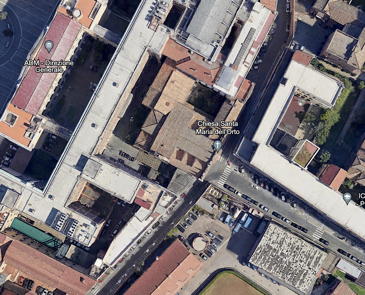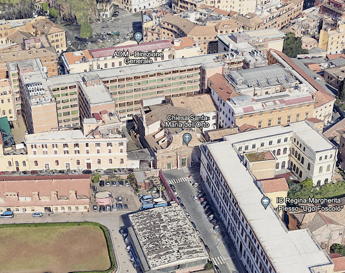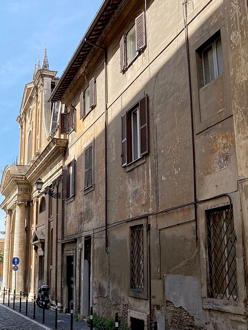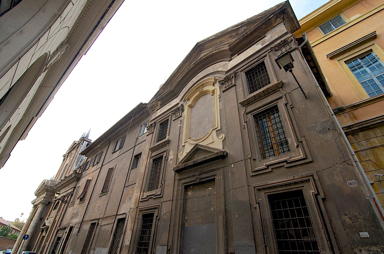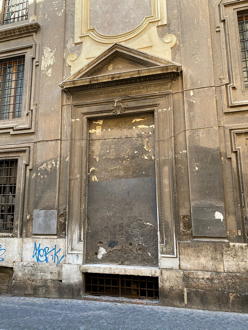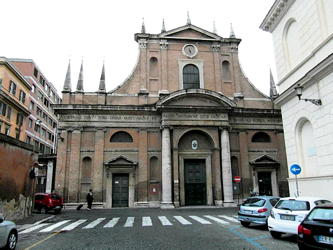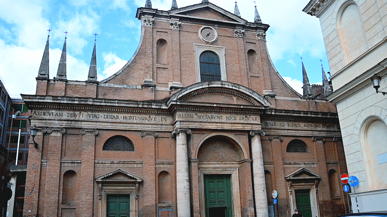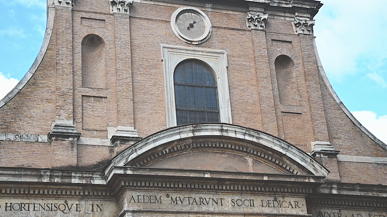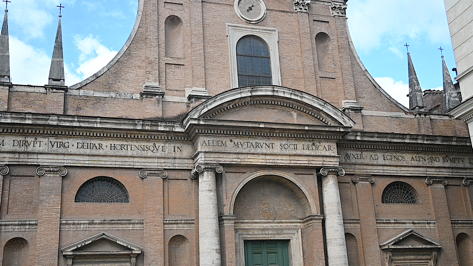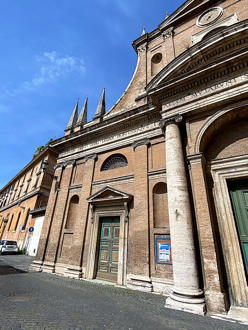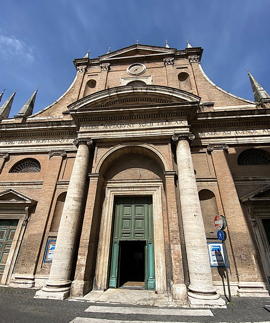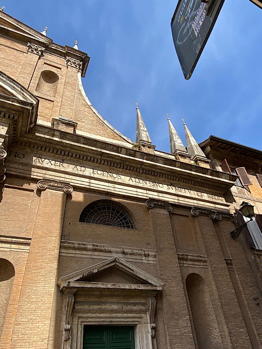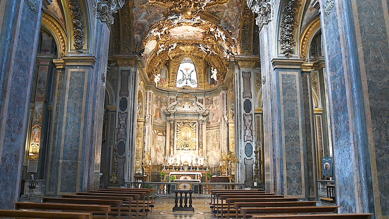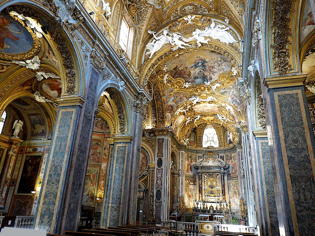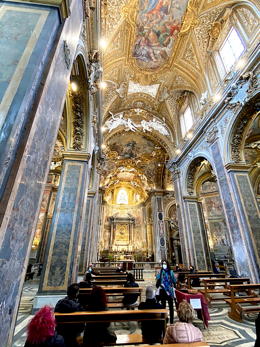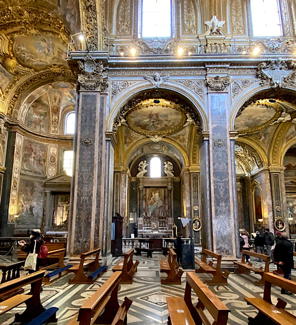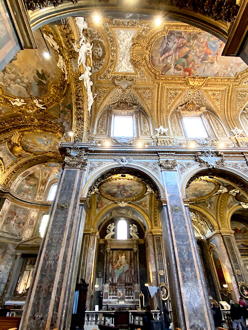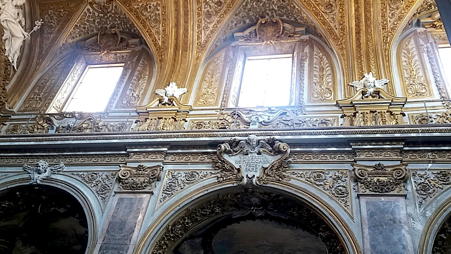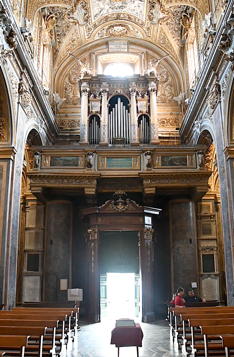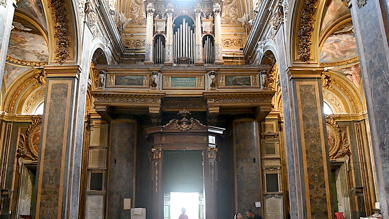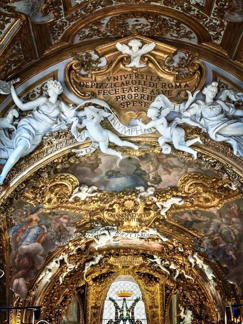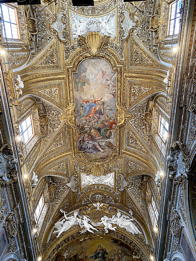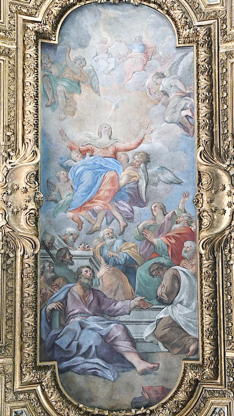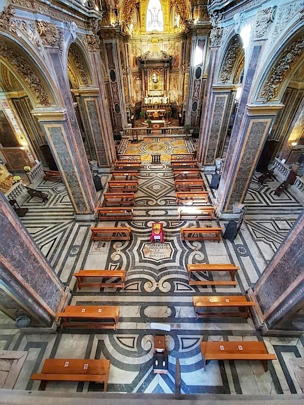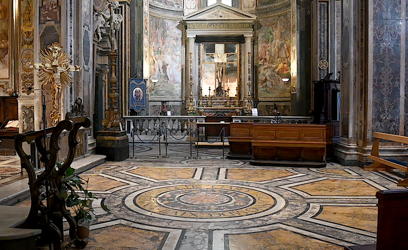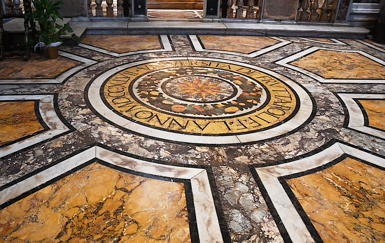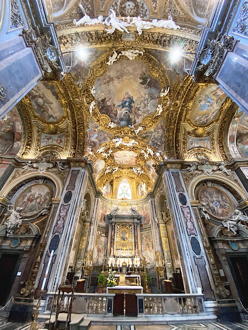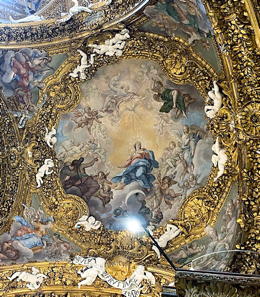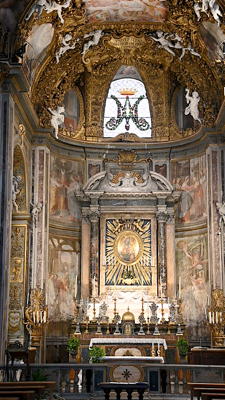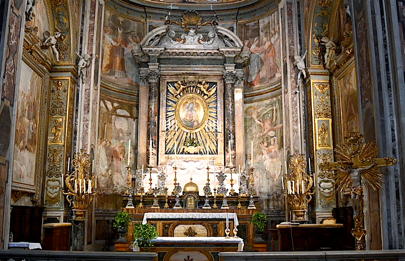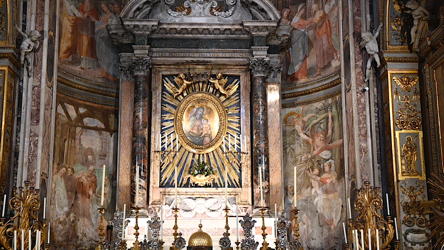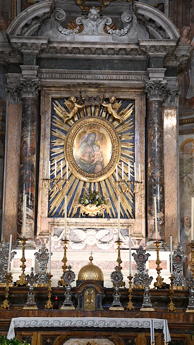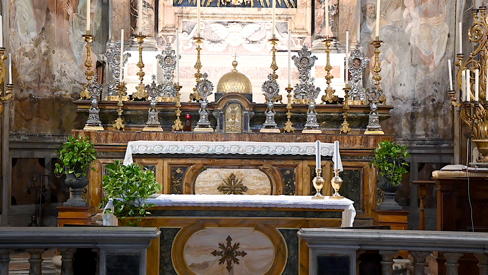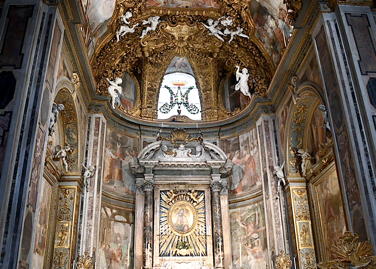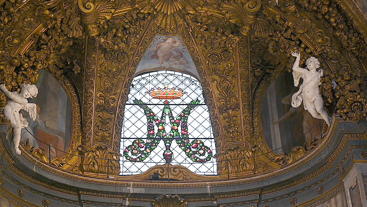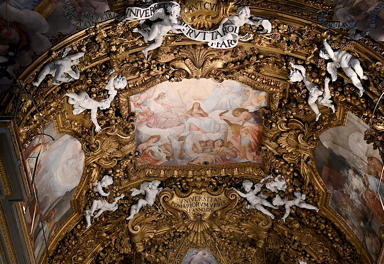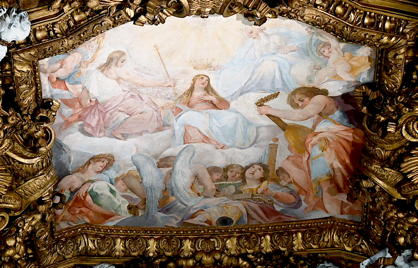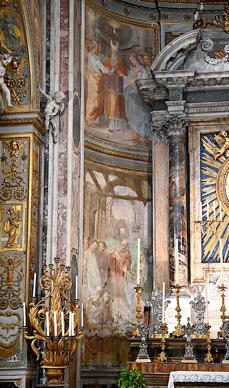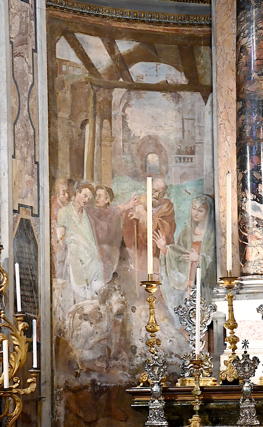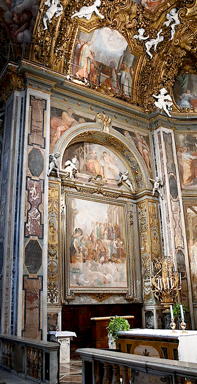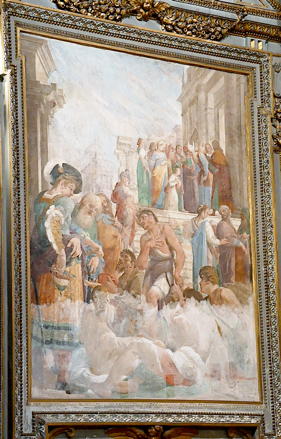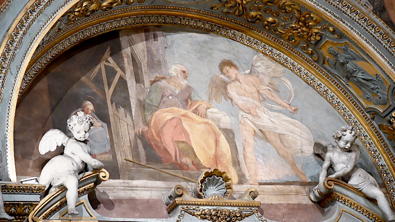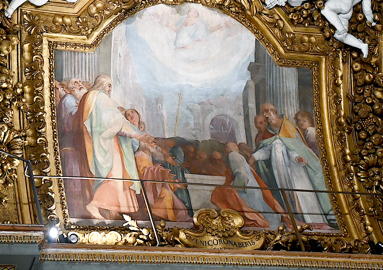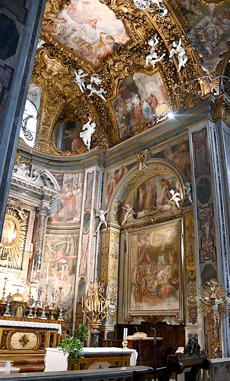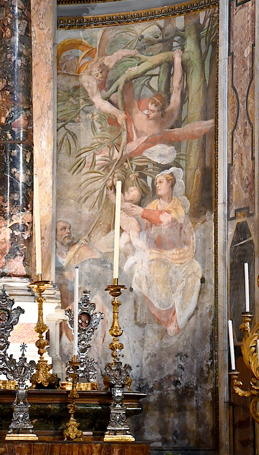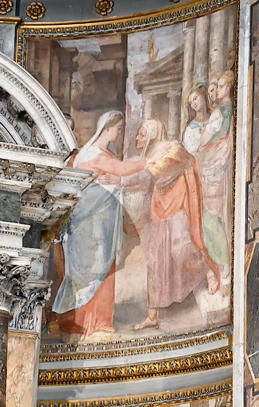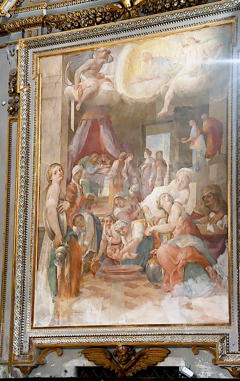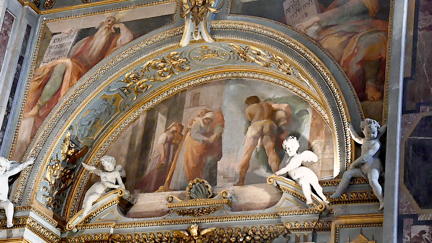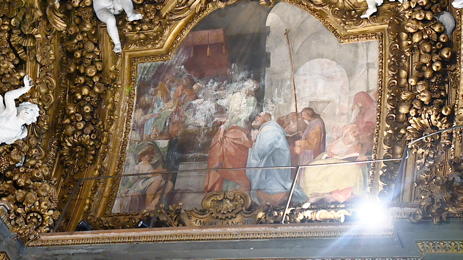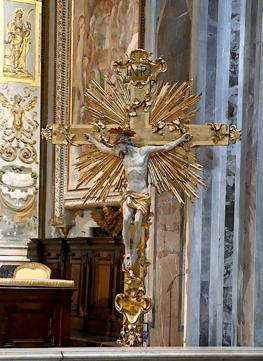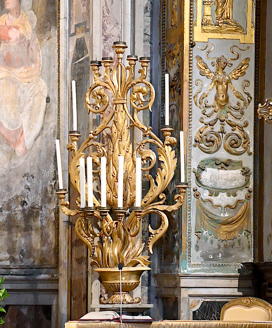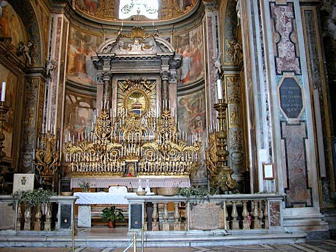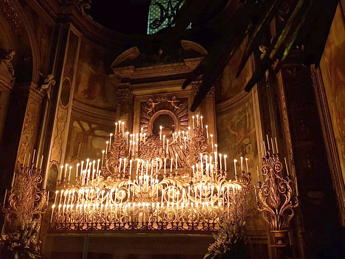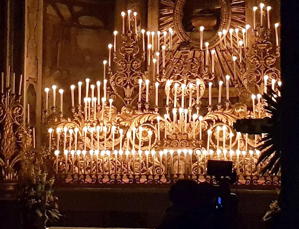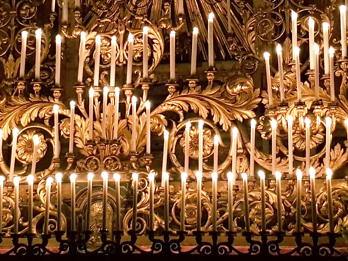Santa Maria dell'Orto is a 16th century guild church with a fabulous Baroque interior in Trastevere. The dedication is to the Blessed Virgin Mary, under a special title of "Our Lady of the Garden". This is the Japanese national church in Rome.
For reference, a plan of the church is available
here.
A plan and location of the art in the church is available
here.
The foundation of the church began as a result of popular devotion to an icon of Our Lady. At the end of the 15th century, the part of Trastevere towards the port of Ripa Grande was almost uninhabited and almost entirely planted with vegetable gardens. The story is that a small-holder in Trastevere with an incurable infirmity, having seen an image of the Blessed Virgin Mary in a very old wall inside a garden, vowed that if he was healed from the infirmity he would hold a perpetual lamp lit in front of the aforementioned figure. The person recovered and kept his promise, and as a result he put up an icon next to the gate into his land (orto means "garden", but also "smallholding" or a small farm). This was venerated by the locals and miracles were reported, which led to the construction of a small devotional chapel around the icon. The date of this is uncertain, but 1488 has been claimed as the foundation year (the first documentary reference to the chapel is 1494).
In 1492 Pope Alexander VI gave a charter to the new Fraternità di Santa Maria dell'Orto, which was a guild inviting membership from professional people working on smallholdings. As well as market gardeners, the membership included craftsmen and a number of guilds. The brotherhood wished to build a full-sized church, and initiated the project in 1489. The original architect, who proposed a plan based on a Greek cross with a central dome, is unknown. The church was finally consecrated (although not finished) in 1524.
The current basilica shape was designed by
Guidetto Guidetti, one of Michelangelo's most brilliant pupil. He converted the plan to that of a Latin cross and inserted cross-vaulting instead of a dome. Final internal decorations were completed in 1579. The façade was begun by
Giacomo Barozzi da Vignola,and completed by
Francesco Capriani da Volterra in 1577.
The prosperity of the archconfraternity allowed it to commission Baroque decorative elements in fresco and stucco work which make up the luscious sumptuousness of the interior today.
Gabriele Valvassori, who was the architect of the church between 1734 and 1758, continued work on the nave which was completed in 1730.
Simone Giorgini,
Leonardo Retti and
Michel Maille, and others, were responsible for the stucco decorations which are such a prominent feature of the church's interior.
